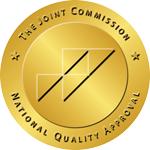Mindfulness for Addiction Recovery
In the 20th century, most people working in health sciences lumped mindfulness in with new-age practices that had no real evidentiary foundation that made them appropriate for clinical application in mental health or addiction treatment.
However, in the 21st century, the practice of mindfulness is no longer considered experimental. Once a novelty without much data or evidence to verify its benefits, research into the mechanisms and efficacy of mindfulness practices on health and wellness began in the 1970s. It gained momentum in the 1980s and 1990s. Then interest surged in the 2000s. Between 2000 and 2010, the volume of mindfulness studies published in peer-reviewed scientific journals exploded. This piqued the attention of the traditional medical establishment. It forced a shift in the way doctors, therapists, and health scientists view techniques once considered interesting but unverified fluff.
Since 2010, wide-ranging surveys and meta-analyses have addressed and verified the scientific basis for mindfulness. The current consensus is that practices such as meditation, yoga, tai chi, and basic breathing exercises are practical and effective components in the treatment of mental health disorders of all sorts. People in recovery from substance use disorders find mindfulness particularly effective.
This article offers a brief history of mindfulness in the U.S. We’ll discuss the neural mechanisms mindfulness training targets, and describe general theory to explain why mindfulness plays an important role in any treatment and recovery plan for people in treatment for substance use and addiction disorders.
Mindfulness in the U.S.
While a majority of the population may view mindfulness as a relatively new phenomenon, history tells a different story. Mindfulness arrived in the U.S. over a century ago. The renowned Indian guru Swami Vivekananda addressed the Parliament of World Religions in Chicago in 1893 tht’s now legendary. Vivekananda represented India, Hinduism, and yoga. But his speech triggered national interest in spiritual and physical practices from Tibet, China, and Japan.
In the decades that followed, the secular aspects of Hinduism, Taoism, and Buddhism – yoga, taiji/qigong, and meditation, respectively – slowly worked their way into American culture. The 1960s saw an explosion of interest in yoga. The publication of a popular series of books by Richard Hittleman helped. Then, in 1970, yoga made it to television. The show Yoga for Health proved yoga, and by extension, mindfulness practices in general, were here to stay.
Dr. Jon Kabat-Zinn, a researcher at the University of Massachusetts, conducted the first scientific studies on the mental health benefits of mindfulness. He began by examining the effect of mindfulness on chronic pain management. Next, he widened the scope of his research to include stress, anxiety, and depression. He synthesized his work into a system known as Mindfulness Based Stress Reduction (MBSR). MBSR is now a default therapeutic technique in use by therapists, treatment centers, and addiction experts worldwide.
It’s been combined successfully with a variety of traditional psychotherapeutic modes. These include Cognitive Behavioral Therapy (CBT), Dialectical Behavior Therapy (DBT), Acceptance and Commitment Therapy (ACT), and Relapse Prevention (RP). Evidence for the complete integration of MBSR with these techniques – and its acceptance by the scientific community – is reflected in a new family of acronyms. We now have MBCBT (Mindfulness-Based Cognitive Behavioral Therapy), MBDBT (Mindfulness-Based Dialectical Behavioral Therapy), MBACT (Mindfulness-Based Acceptance and Commitment Therapy), and MBRP (Mindfulness-Based Relapse Prevention).
Mindfulness Training: Neurochemical Mechanisms
For generations, neuroscientists believed that after a certain point early in life, the formation of new brain cells stopped. This misconception was debunked in the late 1990s, when scientists identified the formation of new brain cells in songbirds. They then documented the formation of new brain cells in adult humans in the early 2000s. A growing body of research proves definitively that mature humans can not only produce new brain cells, but the new brain cells can be produced in a relatively short amount of time. It only takes eight weeks – and the process can be facilitated by the practice of mindfulness techniques.
Mindfulness training results in an increase in brain matter density (neurogenesis) in the following brain regions:
Hippocampus
The hippocampus is an essential structure in the limbic network, the part of the brain primarily responsible for emotional regulation. The hippocampus also contributes to the formation of memory and cognitive functions like self-awareness, compassion, and reflection.
Amygdala
Part of the limbic network, the amygdala is known to be associated with sensations of stress and anxiety.
Posterior Cingulate Cortex (PCC)
The PCC is involved in the process of assessing the relevance of external stimuli to oneself. In addition, it contributes to placing these self-referential stimuli in an individual’s emotional and autobiographical context.
Cerebellum
The cerebellum is primarily known for its function with regard to sensory perception and motor control. However, it also contributes significantly to the regulation of cognitive and emotional processes.
Temp-parietal Junction (TPJ)
The TPJ facilitates the integration of internal and external sensory information, social cognition, and the ability to interpret the desires, intentions, and goals of others. Activation of the TPJ is linked to feelings of empathy and compassion.
The brain structures stimulated and strengthened by mindfulness training combine to form a functional group uniquely relevant to the treatment of substance abuse and addiction. Substance use disorders compromise and lead to deficits in emotional regulation, stress response, anxiety, self-awareness, social intelligence, and empathy.
While these deficits manifest in different ways for different people, their cumulative effect leads to dysfunctional behavior. This can manifest in the form of counter-productive coping skills. Self-medication – a common reason people use illicit substances – suppresses powerful emotions. Disproportionate stress-response and exaggerated anxiety increase the desire for self-medication. Distorted perception normalizes the self-destructive consequences of substance abuse. Diminished social intelligence and reduced empathy contribute to the tendency of people with substance use disorder to lose sight of the consequences of their actions.
Mindfulness training reinforces the neural mechanisms necessary to bolster the perceptive skills required to bring these deficits back into balance. It enables individuals to see and understand their behavior. This, in turn, allows them to build healthy and life-affirming coping skills that lead to sustainable recovery.
A Mindful Model of Addiction
A deep dive into the scientific literature available on the effects of mindfulness training on mental health disorders, including addiction treatment and recovery, leads the diligent reader to mountains of data describing the positive benefits of mindfulness. Most of these are related to well-being, mood, self-efficacy, stress tolerance, and the ability to gain a non-judgmental perspective on behavior. However, only one study elucidates the connection between Buddhist philosophy – the theoretical basis of most practical mindfulness techniques – and contemporary theories of addiction. In “Craving to Quit: psychological models and neurobiological mechanisms of mindfulness as treatment for addictions”, a 2012 paper published in Psychology of Addictive Behaviors, researchers apply the Buddhist theory of human suffering to substance abuse disorders.
They call it “an early model of addiction.”
The Buddhist Model
The Buddhist theory of suffering is relatively simple. It states that desire causes all human suffering. Therefore, the path to enlightenment – or in the case of regular people living 21st century lives, the path to health and wellness – lies in releasing attachment to objects of desire.
Buddhist philosophy also asserts that personal identity is formed, in part, by associations created by habitual behavior. An individual desires an object or subjective sensation and connects fulfillment of that desire to a concept of identity. This reinforces both the habitual fulfillment-seeking behavior and concept of self to the sensations and emotional states achieved by fulfilling the desire.
In the case of an individual with a substance use disorder, pleasurable sensations that follow substance use are the objects of desire. Those sensations become an aspect of identity. When those sensations fade, so fades the habituated sense of identity. The fulfillment of desire, therefore, becomes the search to maintain identity. Identity becomes inextricably intertwined with substance use.
Mindfulness Training: Interrupting the Craving Cycle
The way to break this cycle is to separate the habituated sense of identity from the cycle of desire. Substitute the idea of craving for the phrase cycle of desire, and addictive behavior becomes logical. A person with an addiction craves reinforcement of their sense of identity. More simply put, they crave being themselves. In the case of an individual with an addiction, the created self is counter-productive. It damages long-term health, function, and survival. When the cycle continues in unchecked, iterative repetition, it undermines the true self by distorting emotion, perception, memory, and cognitive function. It supplants and ultimately destroys the original self and becomes the default state of identity.
Buddhist scholars call this cycle “the chain of dependent origination.” Craving is what connects identity to the chain. Therefore, breaking the cycle of craving enables an individual to escape the cycles of addiction. Mindfulness training teaches the skills required to see the cycle as it is – a self-destructive one – and replace it with constructive patterns of behavior. Dr. Lawrence Peltz, author of “The Mindful Path to Addiction Recovery: A Practical Guide to Regaining Control over Your Life” describes mindfulness training as
“… In essence, mindfulness is the quality of awareness that sees without judgment, shining a light on each moment just as it is. This includes physical sensations, feelings, thoughts, and the nature of our experience continually shifting and changing. With practice, it is a skill that can be developed by anyone.”
The first step in developing this important recovery skill is learning to slow the mind down, relax, focus, and “shine a light on each moment just as it is.” There are many paths to this mind-state. Seated meditation, walking meditation, breathing exercises, and the practice of yoga postures all work. What all these techniques have in common is that they help an individual see what drives their actions. It helps them gain the perspective they need to decide whether those actions help them or hurt them.
Benefits Of Mindfulness In Recovery
Mindfulness allows an individual to observe, for instance, that stress triggers a cascade of emotions that leads to a particular behavior, like substance use. Mindfulness allows the individual to understand that though substance use temporarily alleviates the symptoms of stress, that same stress, anxiety, and tangle of uncomfortable emotions returns when the substance clears their system. The clarity of mindful perception can lead to the insight that substance use, in the end, does not work. This insight may lead new levels of understanding. The authors of “Craving to Quit” summarize the benefits of mindful perception in this way:
“By decoupling pleasant and unpleasant experience from habitual reactions of craving and aversion, careful attention to the present moment can function to bring a broadening or spaciousness of awareness that allows new appraisals of life situation. A possible result of this…is the ability of mindfulness to facilitate positive reappraisal.”
Using Mindfulness To Overcome Cravings
When a craving hits, habituated patterns drive behavior toward the self and identity created by addiction. Traditional therapies based on talking and thinking often fail to interrupt these patterns. Mindfulness training – through breathing exercises, somatic practices, and the cultivation of non-judgmental detachment – teaches skills to stop the cycle of craving in its tracks. It allows the moment of craving to pass without acting upon it. It creates the internal space to replace the negative patterns of addiction with the positive patterns of recovery.
In the context of treatment and recovery, the power of mindfulness lies in its ability to support, complement, and functionalize more traditional modes of therapy. While methods such as Cognitive Behavioral Therapy (CBT), Dialectical Behavioral Therapy (DBT), Acceptance and Commitment Therapy (ACT), and Relapse Prevention (RP) help individuals identify patterns of behavior that undermine health and well-being, they do not offer specific techniques with the strength to arrest craving cycles during the critical moments in which cravings occur.
Final Thoughts On Mindfulness Based Addiction Treatment
For decades, mindfulness training has helped individuals with substance use and addiction disorders achieve balance and harmony in their lives. In the early days of the mindfulness movement, the scientific establishment often ignored these techniques. Those days, thankfully, are over. Advances in neuroimaging have allowed researchers to identify discrete changes in brain structure following mindfulness training. This research offers clear data on the mechanisms by which mindfulness supports recovery.
Coupled with a compelling, logical theory to elucidate the role of mindfulness vis a vis identity, choice, action, and behavior, mindfulness is now part of a 21st century approach to addiction treatment. It’s no longer a novelty. The mental health community now accepts mindfulness as an effective, practical, and evidence-based model of treatment for substance use and addiction disorders – and that’s a sign of real progress.


